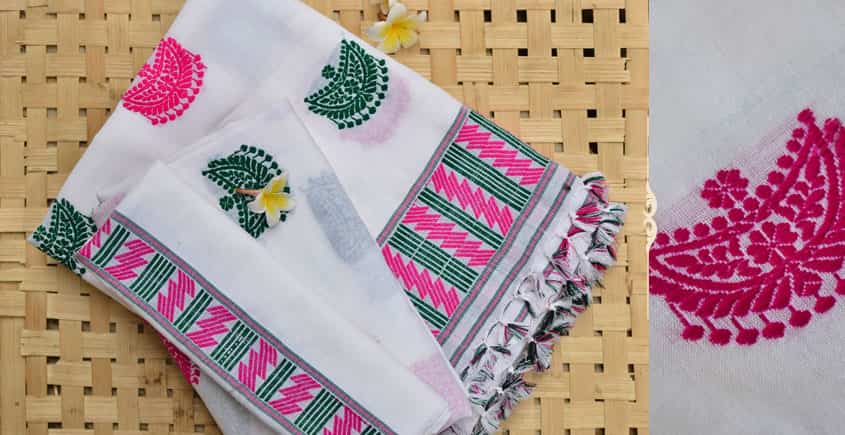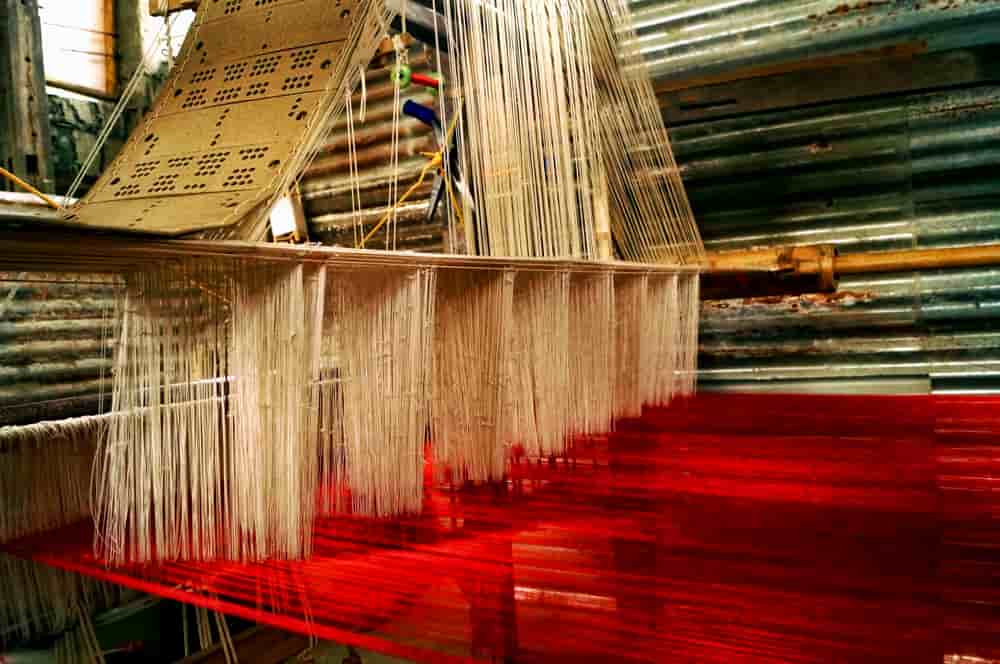Mekhela Chador: A Dive into Assamese Tradition
The northeast state of Assam is known for its rich heritage and culture. It has gifted the world renowned items like golden tea and melodic music. However, few know of its fascinating traditional attire called Mekhela Chador. Worn by Assamese women for generations, it holds significance. This blog aims to reveal little-known facts about this beautiful dress. We will explore what it is made of and how. Additionally, we discuss why Mekhela Chador remains popular among locals and a symbol of Assam’s distinct identity even today.
History of Mekhela Chador
The mekhela Chador has a long history in Assam. In ancient times, Assam traditional dress for women in Assam wore a single cloth called a riha. The riha was wrapped around the body loosely and over the head. It left the face showing. Slowly, the riha changed into what we know as the mekhela Chador today.
The lower part of the mekhela Chador, called the mekhela, first started as two or three pieces of cloth sown together. This formed a broad skirt that wrapped around the waist. The upper part, called the chador, was a single rectangular cloth. It draped over the shoulder and pinned at the waist.
Over hundreds of years, the design evolved. The mekhela became pleated for more movement. The chador developed intricate designs like embroidery. Various materials were used like silk, cotton and local fibres. Traditional mekhela Chadors were made in simple solid colours and patterns.
The Assamese mekhela Chador style has adapted to modern times while maintaining tradition. Vibrant, creative designs are made possible by new textiles and printing techniques. It preserves Assam’s cultural legacy while reflecting current fashion trends. Through its journey from the past to the present, the endearing mekhela Chador narrates the rich history and lively culture of Assam.

What is Mekhela Chador?
The Mekhela Chador is a traditional dress of Assam that is beautiful to behold. It consists of an inner skirt called Mekhela and an outer piece known as Chadar. The Mekhela is a wraparound skirt that extends till the ankles. It comes in many varied designs using fabrics like Muga silk, Pat silk or Eri silk.
The Chadar is a piece of cloth that drapes over the upper body. One end of the Chadar is tucked in around the Mekhela. The loose end is either worn over the shoulder or tied at the back. Together these two pieces make up the graceful Mekhela Chador ensemble.
In older times, women would wear a thicker cloth called Riha under the Chadar. Nowadays, a fitted blouse is worn instead. The delightful patterns on the Mekhela include paris, bulls, peacocks and floral motifs. These motifs are woven by skilled craftswomen using traditional looms.
No two Assamese mekhela chadors are exactly alike given the complexity of designs and varied weaves. The Mekhela Chador is so much more than just a dress. It connects women in Assam to centuries of tradition and craft. It also preserves the livelihood of the weavers keeping Assam’s heritage alive. The elegant Mekhela Chador is a symbol of Assamese culture and an identity for its people.
Reasons of popularity for Mekhela Chador
The traditional Mekhela Chador of Assam has many reasons for its widespread popularity. The delightful dress represents the rich culture and heritage of the state.
The fine silk materials like Muga, Pat and Eri used in creating Mekhela Chador give it a unique texture and shine. The silk remains smooth and graceful for years together. This durability makes it a memorable outfit for special occasions.
The intricate embroidery and intricate designs done by skilled artisans is what draws attention. No two Mekhela Chadors are exactly alike given the manual work. The unique patterns, whether floral, animal or other motifs tell a story of the land.
The comfortable fit and versatile draping style allow free movement. In comparison to other traditional Indian attires, Mekhela Chador moves freely with the body. Its light weight is suitable for Assam’s warm climate.
The dress enhances the beauty of Assamese women. When worn with a matching blouse, it accentuates the curves gracefully. The Assamese dress is flattering for all ages and sizes. Over time, it has become a symbol of cultural pride and local identity for Assamese women.
Above are some of the key reasons for the ever-growing popularity and love for Mekhela Chador amongst the people of Assam as well as those exploring its rich cultural traditions. The beautiful drape continues to allure more audiences.

Process of making Mekhela Chador
The process to create a fine Mekhela Chador is complex and done carefully over time. First, the high-quality silk yarns are obtained through reeling and twisting. Only the best silk like Muga, Eri or Pat is used.
The silk yarns are then dyed vibrant natural colours extracted from plants and minerals. No chemical dyes harm the silk. Next is the warp and weft process where yarns are arranged length-wise and width-wise on large wooden looms.
Artisans then start the intricate process of weaving with their deft hands and skills passed through generations. Elaborate traditional patterns and motifs of Assam are woven together with expertise and precision.
After weaving, the unstitched Mekhela and Chador pieces are removed from looms. Each piece is evaluated for faults and then cut separately. Expert embroidery is done on some parts using silk or cotton threads.
Stitching teams neatly join the two pieces of the Mekhela Chador by hand using strong running stitches ensuring no gaps. Final touches include hemming edges and tightly binding loose threads.
Quality checks and packaging makes the Mekhela Chador ready for customers. Many artisans toil for weeks to craft just one unique Assam mekhela saree honouring Assam’s heritage while also promoting sustainability through handloom.
Designs and Drape
The Mekhela Chador has a different design style from other traditional attires. The acclaimed Assamese Bihu traditional dress is made of two pieces that are creatively draped on the body. The bottom piece is the Mekhela, a fitted lower garment like a lehenga skirt. It hugs the waist till the feet over a petticoat. Silk materials like Muga are commonly used for its smooth texture.
The upper piece is called the Chador. It is a long, flowing drape like a saree pallu. Skilled weavers craft unique patterns on the fabric through generations.
Delicate designs showcase Assam’s tradition. Flower and plant motifs depict the region’s nature. Geometric patterns tell stories through angles and lines. Artisans hand-weave but avoid chemically-made prints. Natural hues showcase Assam’s culture with grace. Occasionally, an extra woven design called Pari decorates the Chador.
To wear it, women wrap the Mekhela around the waist and tuck in pleats. The Chador then pleats into the Mekhela’s top. Its end drapes the shoulder and back gracefully.
Conclusion
The Assam traditional costume exquisitely merges Assam’s proud heritage with contemporary trends. From durable materials to intricate designs, it showcases the state’s heritage in every detail. The elegant drape has attracted national attention with its grace and versatility. Most importantly, it empowers weavers by preserving a traditional craft. While tastes evolve, Mekhela Chador sustains Assam’s cultural roots. It inspires pride in one’s identity and nostalgia for generations who wore it. The dress will surely keep delighting onlookers with its embodiment of Assam’s rich culture for many more years to come.